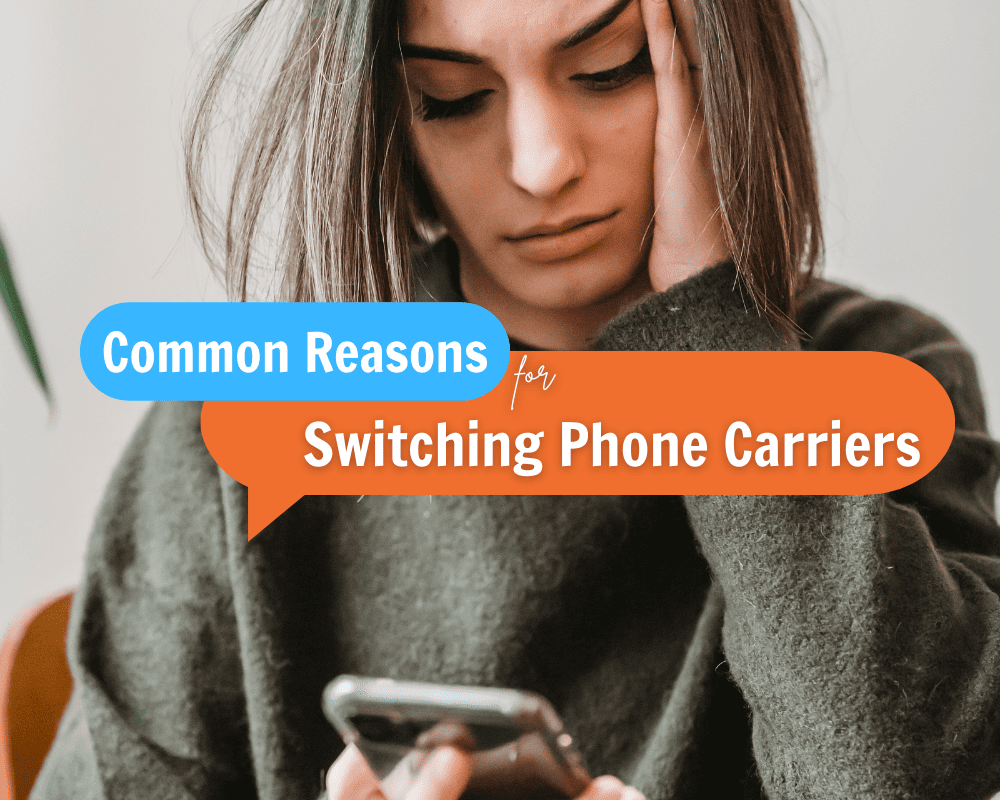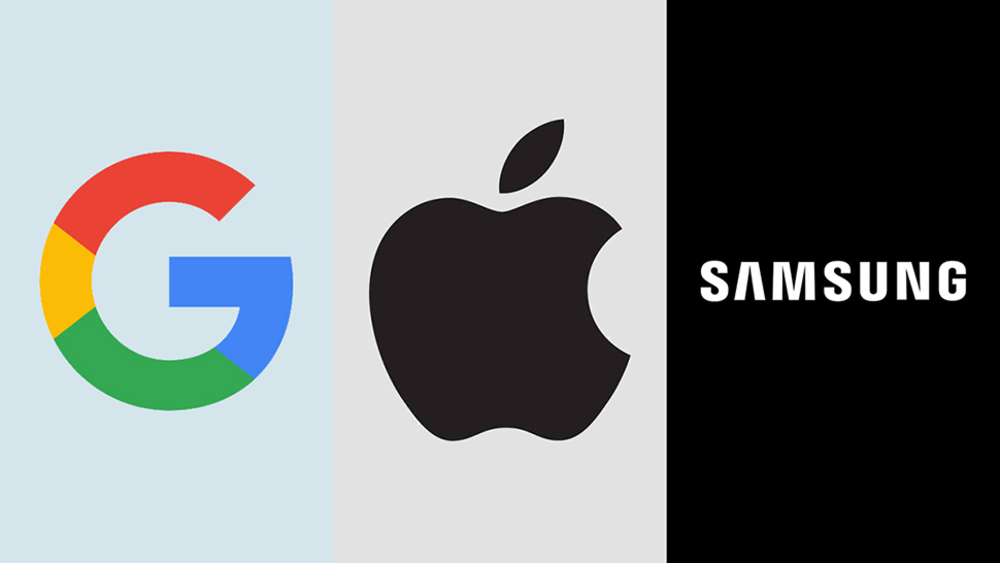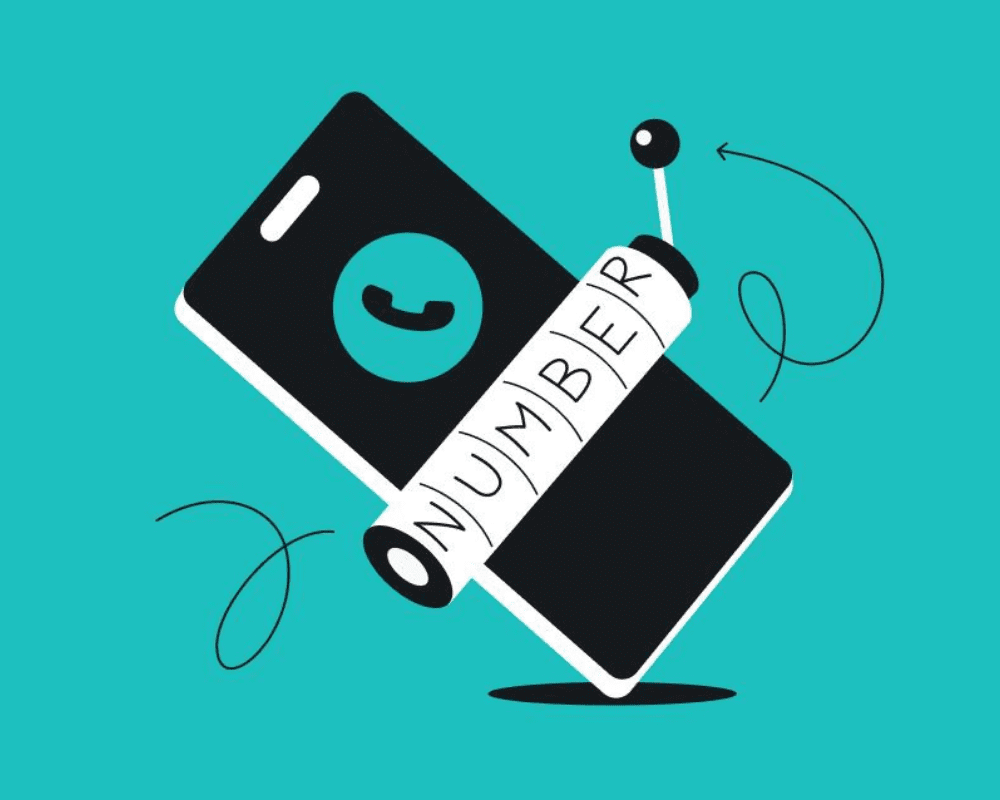Save Now: Best Time to Switch Phone Carriers Revealed!

In the nutshell
Uncover the best timing and tactics for changing your phone service provider to guarantee savings and a smooth switch. This manual offers important information on evaluating prepaid versus postpaid options, examining contracts, understanding seasonal promotions, pinpointing the best times to find offers, and ensuring a trouble-free transfer of your number.
- Discover the strategic moments to switch phone carriers for maximum savings and minimal hassle.
- Gain essential insights on contract analysis, seasonal deals, and the importance of understanding fees and number portability.
Introduction
As our reliance on mobile communication continues to grow, choosing the right phone carrier has become a critical decision that affects both our personal and professional lives. Perhaps you’ve found yourself grappling with poor coverage, high costs, or less-than-stellar customer service. Whatever your reason for considering a switch, there’s no denying that when it comes to mobile carriers, timing is everything. By understanding industry trends and taking strategic steps, you can switch to a new provider at just the right time to maximize benefits and minimize costs. In this guide, we’ll uncover the best times to switch phone carriers, how to do it without incurring fees, and ensure a smooth transition. Let’s dive into the world of mobile carriers and help you save money while getting the service you deserve.
Reasons for switching phone carriers

Switching phone carriers is a decision often prompted by a variety of factors that affect user satisfaction and expenses. Here are some common reasons why people consider making a switch:
- Cost Savings: A primary motivator is the potential to lower monthly expenses. You might find that your current carrier has gradually raised prices or that other providers offer more competitive rates, especially if you’re willing to forgo certain “perks” or services bundled into your current plan.
- Network Coverage and Quality: Sometimes the decision is driven by the need for better coverage in your area or while traveling. Switching to a carrier with superior network strength can eliminate frustration with dropped calls or slow data speeds.
- Customer Service: An unsatisfactory experience with customer service can push customers to switch. If your concerns are met with long wait times, unhelpful responses, or unresolved issues, a carrier known for excellent customer support may be appealing.
- Data and Plan Flexibility: You might seek plans that offer more data, fewer restrictions, or aren’t bundled with unwanted extras. Changing carriers could also mean finding a plan that adapts to your usage patterns, allowing for monthly adjustments without penalty.
- Device Upgrade Options: The lure of a new smartphone can incentivize a move, especially if your current carrier’s terms for device upgrades are stringent or if another carrier offers better promotions or discounts on the latest devices.
- Contractual Terms: Customers who find themselves at the end of a service contract, or those with no contracts at all, might explore their options. Without the constraint of early termination fees, making a switch becomes much more attractive
Switching your mobile carrier can be a strategic decision to enhance your overall mobile experience, taking advantage of improved coverage, better pricing, and services that more closely match your needs
Key Insights to Determine the Best Time to Switch

Prepaid vs. Postpaid: A Cost-Saving Analysis
When looking at phone plans, the choice between prepaid and postpaid can make a significant difference in your expenses. Prepaid plans are typically more straightforward— you pay for your service upfront, without a credit check, and without the potential for surprise charges. They tend to offer better control over spending and can come without the long-term commitment that postpaid plans often imply.
On the other hand, postpaid plans often come with perks like discounted or free phones, the convenience of family sharing plans, and higher data speeds or priority service. But these can come at a cost, including potential overage fees and typically higher monthly rates. Analyze both options by considering upfront costs, monthly fees, and potential overage charges to understand which will be the most cost-saving choice for you.

Prepaid and postpaid plans cater to different needs, and understanding their contrasts is key for cost savings. With prepaid plans, you pay upfront for a set amount of data, minutes, and texts, providing better control over your monthly spending and avoiding the shock of unexpected overage charges. They’re an excellent choice if you want to avoid credit checks or long-term commitments, typically appealing to budget-conscious consumers and those who prefer flexibility.
In contrast, postage plans involve paying after usage, often accompanied by a monthly bill that may include additional fees for exceeding plan limits. These plans often come with perks like reduced prices on new phone models, family sharing options, and larger data allowances. While they offer convenience, they might also lead to higher costs if not closely monitored.
A cost-saving analysis must include the consideration of your lifestyle and usage habits. If you’re a light user, irregular in your phone usage, or prioritizing strict budget management, prepaid plans could be more economical. However, if your usage is heavy, consistent, and you value the latest phones and added benefits, postpaid plans may end up saving you money in the long run with their package deals and bonus services.
When analyzing the best financial option, remember to consider the total cost of ownership over the duration of your intended use. This should encompass the upfront costs, monthly fees, and any potential savings from promotions or loyalty discounts. When considering a switch in phone carriers, weighing the benefits of prepaid versus postpaid plans plays a crucial role in cost savings.
>> Read more: 4 Tips How to Switch Phone Carriers Without Paying
Understanding these plan dynamics is key:
- For Tighter Budgets: If you want to save money and avoid the potential for unexpected charges, prepaid might be your best bet.
- For Heavy Data Users: Postpaid plans often have more generous data allowances and the option for unlimited data—crucial if you stream a lot of content.
- For Those Seeking the Latest Devices: Postpaid plans frequently offer financing for the newest phones, while prepaid options may not always have the latest models available or may require full payment upfront.
Key Insights to Determine the Best Time to Switch
Analyzing Contract Terms and Potential Savings
Every phone carrier has unique contract terms that can influence the decision to switch. It’s important to scrutinize your current contract for any clauses related to termination fees or penalties. Early termination fees (ETFs) can negate any savings you hoped to achieve by switching. Additionally, look at what promotional terms you may be forfeiting by leaving early, such as bundled services or special rate plans.
Potential savings come into play when the cost of staying with your current carrier outweighs the benefits. This could be due to consistently unused data allowances, paying for services you don’t use, or simply because another carrier offers a better deal for your needs. Always weigh the savings against the cost of ETFs and any benefits you might lose, ensuring that switching truly offers the financial edge you’re seeking.
Understanding your contract is essential when considering a switch in phone carriers. Contracts often include details such as the minimum term commitment, early termination fees, and potential penalties for breaking the terms. By comprehensively analyzing your current contract, you can identify any financial implications that a switch might entail and weigh them against the potential savings from a new carrier’s plan.
Look for clauses that allow for termination without penalty, which can occur in certain circumstances, such as a significant change in service terms or coverage issues. Additionally, examine the contract for any loyalty benefits that you might lose if you switch, and determine if those losses outweigh the benefits of a new deal.
When you’re considering a switch in phone carriers, a deep dive into the details of your current contract is essential to realize potential savings. The two crucial aspects to focus on are the contractual obligations with your current carrier and the terms of new offers from potential carriers.
- Look for Hidden Fees: Early termination fees can take a big bite out of any potential savings when you leave a contract prematurely. Understanding the costs associated with leaving your current carrier can help determine if it’s financially prudent to switch now or wait until the contract naturally ends.
- Examine Expiry Dates: Often, contracts have specific expiry dates, after which you may be automatically rolled into a month-to-month plan. A switch timed just as your contract ends can avoid extra fees.
- Assess Loyalty Benefits: If you’ve been with a carrier for a long time, you may have accrued benefits or discounts that could be lost when you switch. Compare these against the savings a new carrier is offering to ensure it’s worth the move.
- Evaluate Bundling Options: Some carriers offer bundled services. If you’re using these services, check if unbundling will affect the pricing of your other products or services with the same carrier.
- Check for Price Guarantee Periods: Some plans come with a fixed price for a certain period. If you’re within this timeframe, switching could mean forfeiting a low-price guarantee.
- Consider the Cost of New Equipment: Switching might require purchasing a new phone, especially if your current one isn’t compatible with the new carrier’s network. This can offset savings unless the new carrier offers a significant rebate or financing plan.
By accounting for these factors and comparing them with the incentives being offered by other carriers, you’ll be better equipped to gauge whether the potential savings are worth the switch. It’s about finding the right balance between the benefits of a new contract and the costs associated with exiting your current one. With a clear understanding of contractual details, you can strategically plan your switch to take full advantage of cost savings.
Annual Sale Patterns of Major Carriers

Major phone carriers often follow predictable patterns for sales and special offers throughout the year. These patterns can significantly influence the best time to switch for savings. Generally, new customer promotions and aggressive discounts emerge during key periods:
- Holiday Sales: The year-end holidays, including Black Friday and Cyber Monday, often bring some of the most significant discounts on plans and smartphones. Carriers compete for consumers’ attention during this high-spending season with appealing deals.
- Back-to-School Promotions: Around August and September, carriers target parents and students preparing for the new school year with special offers, which can include reduced rates or bundled deals on family plans.
- New Year Promotions: January is a time when many consumers think about their finances, and carriers may offer deals to entice those looking for a fresh start with a new service provider.
- Mid-Year Sales: Events like Memorial Day, Independence Day, and Labor Day sometimes serve as an impetus for carriers to promote new plans or updated services.
Identifying and leveraging these periods can lead to considerable cost savings when switching carriers. These deals often go beyond simple rate discounts, potentially offering waived activation fees or free accessories.
In addition to annual sales, carriers might also have unexpected promotions throughout the year to respond to competitive pressure or to clear inventory ahead of new model releases. Keeping an eye on these trends can be crucial, as such flash sales can offer brief windows of opportunity for substantial savings.
Maximizing benefits requires staying informed and ready to act fast, as these deals are frequently time-sensitive and subject to limited stock or availability. Signing up for carrier newsletters, monitoring their websites, and following tech news can help you anticipate and take advantage of these annual sales patterns.
Timing Your Switch for Maximum Savings
Decoding the Cell Carrier Cycle
Understanding the billing and upgrade cycle of your current carrier is crucial when planning a switch. Cell carriers often operate on a monthly billing cycle, and if you switch too soon, you might pay for the entire cycle without using it. It’s wise to initiate the switch toward the end of your billing cycle to avoid paying for unused services.
Next, pay attention to when carriers typically increase promotions, which is often before the introduction of new technology or services. They may, for instance, offer special deals to clear out inventory before new phone models arrive, resulting in potential hardware savings if you’re in the market for a new device.
Moreover, carriers adjust their offerings at the end of fiscal quarters to potentially meet business targets. During this period, they might offer incentives for new sign-ups or upgrades.
It is also important to keep in other cycles such as data allotment cycles, promotional offer cycles, and network upgrade cycles (which could affect coverage and speeds). Reading user agreements and policy outlines, asking customer representatives for clarification, and tracking provider changes over time will help you to decipher the best, most cost-effective point in the cell carrier cycle to make your move.
The Season for Deals

Carrier deals are often seasonal, with the end-of-year holiday season being a prime time for discounts as carriers compete to entice customers into switching their service. Holiday promotions can include slashed prices on popular smartphone models, increased data allowances, or bonuses such as gift cards with the purchase of a plan.
In addition to the winter holidays, deals can typically be found around other retail-heavy periods like Back-to-School season, particularly aimed at students and families, or during tax season when consumers may have refunds they are looking to invest in new technology.
Another noteworthy time is the beginning of summer, where promotions may start to align with travel and vacation trends. People are likely to seek better international plan options or more robust data packages to allow for travel mapping and photo uploads.
Understanding these seasonal trends enables you to anticipate when you might get the most bang for your buck. It may be tempting to switch as soon as a deal catches your eye, but if you can wait for a key promotional period, the patience could pay off in savings and added value. Keep an eye on the calendar and subscribe to newsletters or alerts from carriers to stay informed on upcoming deals.
The telecom industry has its seasons for deals, and being aware of them can lead to substantial savings when you’re contemplating switching phone carriers.
- Late Summer to Early Fall: This period is high season for competitive deals. Carriers are vying for new customers who might be considering switching as students return to school. Family plans, student discounts, and bundled offers become particularly attractive as carriers aim to lure in groups of customers.
- November and December: Black Friday and Cyber Monday, along with the entire holiday shopping season, present perhaps the most aggressive promotional offers. From slashed prices on the latest smartphones to significantly discounted or even free plan months, these months offer the best window for deal-seekers.
- End of the Quarter or Fiscal Year: Carriers may push to meet sales targets with enticing offers, making the end of a quarter – and particularly the end of the fiscal year – another ideal time to switch if you’re chasing savings and bonuses.
Moreover, don’t forget that deals also emerge off-season in response to competitor moves or to clear inventory ahead of new releases. It’s wise to stay informed about industry trends and keep an eye on carrier websites, tech deal blogs, and newsletters for breaking offers. Signing up for alerts from your preferred carriers and tech forums can also ensure you don’t miss out when the season for deals arrives.
Launch Events and New Model Releases

Keeping a close eye on the smartphone industry’s launch events and new model releases can lead to substantial savings when switching carriers. Major manufacturers like Apple, Samsung, and Google typically release their flagship phones once a year, triggering carriers to offer attractive trade-in deals and discounts to entice customers to upgrade or switch.
These events usually take place:
- Apple in September: For the latest iPhone models.
- Samsung in February/March: For their new Galaxy S series.
- Google in October: When they unveil the newest Pixel phones.
Carriers may offer additional promotions including, but not limited to, generous trade-in credits, discounted monthly plans, or even BOGO (buy one, get one free) offers on the latest devices. Therefore, synchronizing your switching plans with these launch cycles can result in a top-tier phone at a reduced cost, often combined with a more suitable service plan.
Launch events and new model releases are pivotal moments in the cell phone industry, often accompanied by attractive carrier offers designed to capitalize on the excitement. These often include trade-in programs, where you can receive significant credit towards a new phone by trading in your old model. To get the most out of these offers, your device typically needs to be in good condition and fairly recent. The value of trade-ins diminishes quickly as a phone model ages, so timing is critical.
Moreover, carriers might bundle the latest phones with special plan discounts, extra data, or other incentives like free subscriptions to streaming services. These bundles are strategically offered around the time of launch to both attract new customers and persuade existing ones to renew their loyalty.
By planning ahead and aligning your carrier switch with these launch events, you can take advantage-of some of the most compelling offers in the market, often leading to getting your hands on the latest technology at a fraction of the cost. Keep an eye on tech news and carrier announcements to make an informed decision on the right time to make your move.
Understanding Fees and Keeping Your Number

How to switch phone carrier without paying?
When considering switching phone carriers, one of the primary concerns for many consumers is avoiding unnecessary costs. To switch without paying fees, you should first understand the common charges that might apply. These often include early termination fees (ETFs) if you’re leaving a contract early, and outstanding equipment costs if you’ve purchased a phone through your current carrier’s installment plan.
To navigate around ETF’s, review your current contract terms closely. Some carriers might waive these fees if you’re near the end of your agreement. Additionally, the FCC mandates that carriers prorate these fees, reducing them the closer you are to the end of your contract. For equipment costs, ensure that you’ve paid off your device in full. Carriers generally require full payment before you can switch and keep your number. If you’re still making payments, consider waiting until you’ve cleared any remaining balances to avoid hefty penalties.
Moreover, it’s worth checking whether your new potential carrier offers to cover these costs. Many providers have special promotions where they will pay off your ETF or remaining device payment plan if you switch to their network. These incentives can sometimes cover several hundred dollars in costs. Remember to read the fine print and understand the eligibility requirements for these deals – they often require you to trade in your current device and purchase a new one from them. Furthermore, be aware of any required commitments, such as staying with the new carrier for a set amount of time, so you don’t end up incurring new fees.
Legally, you have the right to keep your current phone number when you switch carriers, regardless of any debts with your old provider. This is known as local number portability (LNP). To keep your number, initiate the switch with your new carrier rather than canceling your service with the old one first, as this could result in losing your number. The new provider will handle the transfer process, which can take a few hours to a couple of days.
Seamlessly Porting Your Existing Number
To ensure a seamless porting of your number, first, verify eligibility for porting with your new carrier. Contact your current provider to unlock your phone, if necessary. Then, gather account information like your account number and PIN for verification purposes. It’s also essential to keep your old account active until the transfer is complete to avoid losing your number. Notify your new carrier that you intend to port your existing number and provide them with the required information. The process is typically straightforward and should be completed without disrupting service. Remember, by law, carriers must allow you to keep your local number, so don’t hesitate to assert this right.
To port your number smoothly, it’s crucial to follow a structured process while complying with regulations and carrier-specific procedures. The steps below outline how to seamlessly transfer your phone number from your old carrier to the new provider:
- Check Eligibility: Make sure your number is eligible for porting. The majority of mobile numbers can be ported, but some restrictions apply, particularly for geographic reasons.
- Gather Information: Have your account number, account holder’s name, billing address, and PIN or password ready. This information is necessary for verification during the porting process.
- Unlock Your Phone: Verify that your phone is unlocked. An unlocked phone is free to use on other networks, which is essential for porting your number to a new carrier.
- Do Not Cancel Your Service: Keep your current service active as you initiate the porting process. Your old account must be active for the number to be transferred. The cancellation will occur automatically once the port is complete.
- Contact the New Carrier: Reach out to the new carrier where you wish to port your number. Provide them with all the required details and inform them that you wish to keep your current phone number.
- Await Confirmation: Both old and new carriers will work together to port the number. You usually receive a text message or email confirming the transfer with details on when the switch will occur.
- Test Your Number: Once you’ve received confirmation that the porting process is complete, make a call or send a text to ensure that your number is functioning correctly on your new carrier’s network.
It’s important to remember that although carriers are required by law to allow you to port your local number, they are permitted to charge for this service. However, most do not, as the incentive to gain a new customer often outweighs the small fee they could charge. The entire process can take a few hours to a couple of business days, and if you’re porting from a landline, it can take longer. By carefully managing these steps, you can ensure a seamless and hassle-free transition of your phone number to your new chosen carrier.
Strategies for a Smooth Transition to a New Provider
Before You Make the Move: What to Prepare
When contemplating a switch to a new phone carrier, preparation is vital. It helps to avoid common pitfalls, such as interruption of service or incompatibility issues. Here’s a straightforward checklist to ensure you’re well-prepared for a hassle-free transition:
- Scrutinize your current contract for any obligations or termination fees.
- Determine if you are eligible for an upgrade, which could benefit you at your new carrier.
- Note your current plan’s end date to avoid overlapping charges.
- Compare data plans, prices, and customer service reputations across carriers.
- Verify the network coverage of potential new carriers in your usual locations.
- Review the policies for bringing your own device to ensure compatibility.
- Back up your contacts, photos, and important data to avoid loss during the transition.
- Ensure your phone is unlocked so it can be used with another network.
- Keep your account number and PIN from your current carrier at hand for a smooth number portability process.
The importance of these steps cannot be understated. Researching plans can prevent overpaying for unneeded data or minutes,In transitioning to a new phone provider, dig deep into researching different carriers’ offerings. Specifically, you should start comparing data plans, coverage maps, and customer reviews to find a service that matches your communication needs and budget. Be mindful of your usage, especially data consumption, which tends to be a significant factor in plan pricing. Understanding the coverage in your area is paramount to avoid signal issues after making the switch. Moreover, it’s crucial to assess contract terms with your current provider to avoid any early termination fees.
As you prepare for the transition, always ensure that your device data is backed up. Losing contacts, photos, and other essential information can be a distressing experience. Backup procedures vary depending poor phone model and operating system; however, the common thread is securing your data in a cloud service or physically onto a computer. Additionally, confirm that your phone is unlocked – meaning, it isn’t tied to your current carrier’s network; this grants you the freedom to transition without having to invest in a new device.
Lastly, consider the timing of your switch. This isn’t just about finding the best deals or promotions but also about the practicalities of service continuity. Aim to begin the switch process towards the end of your billing cycle to avoid paying for service you won’t use.In summary, the best time to switch phone carriers is highly individual and depends on several factors, including personal data usage, coverage needs, device compatibility, and current contract obligations. Transitioning to a new provider can offer significant cost savings and improved service, if done thoughtfully and strategically
After the Switch: Proactively Maximizing New Plan Benefits
For a seamless experience when transitioning to a new provider, it’s essential to understand how to harness the full spectrum of benefits your new phone plan offers. Firstly, dedicate time to explore and familiarize yourself with the array of features your new carrier provides. This might include special perks like free streaming services, international roaming options, or enhanced security measures. Review any introductory offers carefully; these can range from reduced rates for the first few months to bonuses for porting your number. Take advantage of these early benefits as they can significantly augment the value of your plan.
To manage your new service efficiently, promptly set up your online account. This digital portal is pivotal for keeping track of data usage, viewing and paying your bills, and tweaking your plan options. An online account often comes with tools for monitoring your data and controlling additional charges. Moreover, register for any rewards programs or customer incentives that your new provider offers to capitalize on every saving opportunity and potential rewards that come your way.
Lastly, familiarize yourself with the customer support channels your new provider offers. This might include online chat, customer service numbers, forums, and help centers. Knowing where and how to get help can save time and frustration when you need assistance. Remember, proactive communication with your new carrier can resolve issues before they escalate.
FAQ: Savvy Shoppers’ Queries Answered
How to switch phone carriers and keep your number?
To switch carriers while keeping your number, first, do not cancel your current service; instead, choose a new carrier and inform them you want to port your existing number. Make sure your phone is unlocked and compatible with the new network. Then, provide the new carrier with your current account information, including account number and PIN, which they’ll need to initiate the porting process. It’s crucial to maintain service with your old carrier until the port is complete to ensure you don’t lose your number. The new carrier will handle the rest, transferring your number typically within one business day.
How often can you switch phone carriers?
There’s no set limit to how often you can switch carriers, as long as you’ve fulfilled any contractual obligations with your current provider. Be mindful of early termination fees and the financial impact of switching frequently.
Do I need to unlock my phone to switch carriers?
Yes, if your phone is locked to your current carrier’s network, you will need to have it unlocked before you can use it with a new provider. Contact your current carrier to request an unlock.
What I need to do when my phone is suspended and I want to switch carriers?
If your phone is suspended, you may need to resolve any outstanding issues with your current carrier before you can switch. Once the suspension is lifted and the phone is active, you can initiate a port request with the new carrier.
To switch phone carriers and keep your number, first, don’t cancel your current service. Then, choose your new carrier and plan, and provide them with your current account details. The new carrier will initiate the phone number porting process for you.






